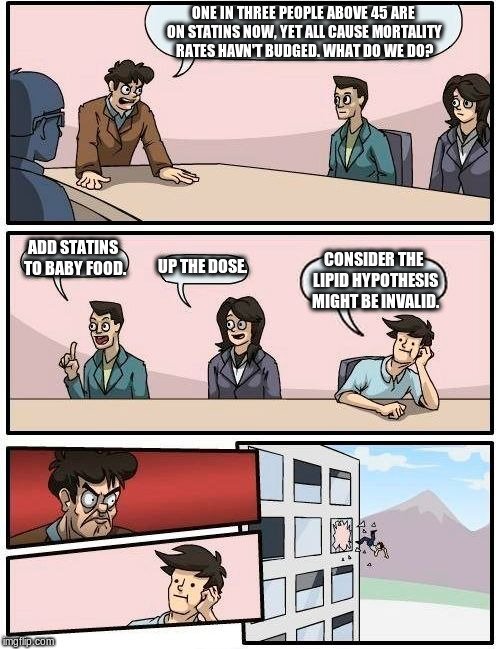Over the past month there has been a series of reports in credible international medical journals detailing new concerns about how statins negatively affect people who are seen as being at risk of heart diseases — as opposed to those who have suffered cardiac incidents already.
None of these reports got any coverage in the Australian news media, despite being well reported in Britain and elsewhere.
Australian doctors hand out statins to their patients more regularly than any other pharmaceutical, which in itself makes them highly newsworthy.
While many health writers are keen to lecture the public on the dangers of sugar in their drinks, fats in their food and alcohol in their social life, they appear to avoid the risks being uncovered about this ubiquitous medication.
And here in WA, we know the dangers of zealous overprescription after a small group of doctors was exposed in the early 2000s drugging children suspected of suffering attention disorders at the highest rate in the world.
Statins cost taxpayers more than any other medication through subsidies paid by the Pharmaceutical Benefits Scheme.
In the year to June 2014, the PBS forked out $288 million to subsidise people taking rosuvastatin (Crestor) and $279 million for those on atorvastatin (Lipitor). That’s more than a half a billion dollars a year to help people lower their cholesterol.
If, as some of these new studies attest, statins are of no benefit to many of the patients to whom they are prescribed, this represents a considerable waste of taxpayers’ money, which should concern the Government.
So does the silence just reflect a lack of rigour by local medical authorities in alerting the public to the dangers of such widespread prescribing of a medication with strong side effects for many consumers who get little or no potential benefit?
Or is it more sinister, as we saw when the ABC’s Catalyst program had the audacity to ask dangerous questions about statins?
There the combined forces of Big Pharma and the medical establishment shut down a valuable debate by resorting to fear tactics and with virtually no attempt to make a scientific defence.
It goes without saying that no one should go off any medication on the basis of a news report or views expressed in an opinion column. However, well-sourced information should make the basis of a discussion with a statins user’s GP — or with another GP if they want a second opinion.
The most alarming of the new reports was published in the UK’s Expert Review of Clinical Pharmacology early in January and comprised a study of more than 20 major research papers on statins.
The conclusion of lead author Harumi Okuyama, of Nagoya City University in Japan, is that statins definitely do more harm than good.
“We have collected a wealth of information on cholesterol and statins from many published papers and find overwhelming evidence that these drugs accelerate hardening of the arteries and can cause, or worsen, heart failure,” Dr Okuyama said.
“I cannot find any evidence to support people taking statins and patients who are on them should stop.” The nub of the Okuyama group’s findings is that that the long-standing belief that statins protect the heart by lowering cholesterol is wrong.
Not only did they find high cholesterol is not necessarily linked to heart disease, but they showed statin users were more likely to have calcium deposits in their arteries, a known cause of heart attacks, because they block production of a vitamin that counters calcification.
And the research returned to a major concern in many areas of modern medicine: most of the early studies suggesting benefits from statins were linked to the manufacturers and were later found to be flawed.
A new report released last week in the US Journal of General Internal Medicine confirms a long suspected link between statins use and diabetes.
A 10-year study of more than 25,000 statins users found people using the medication had a substantially elevated risk of contracting type 2 diabetes and putting on weight, and had more than double the risk of diabetic complications including eye, nerve and kidney damage.
Lead author Ishak Mansi from the University of Texas said: “I am sceptical about the prescribing guidelines for people at lower risk (of heart disease).
“I am concerned about the long term effects on the huge population of healthy people on these drugs who continue for many years.”
These findings back a scathing report published in the British Medical Journal last year which also attacked the prescribing of statins to people who had not suffered a cardiac incident.
It found statins increased life expectancy by just three days for people who did not already have a diagnosis of existing heart disease or associated symptoms.
But previous independent studies said a high proportion of users suffer debilitating side effects like muscle pain and skeletal weakness.
Dr Okuyama’s team made a significant recommendation: “The epidemic of heart failure and atherosclerosis that plagues the modern world may paradoxically be aggravated by the pervasive use of statin drugs. We propose that current statin treatment guidelines be critically re-evaluated.”
There is big money fighting against these new statins findings — and the wider questions they pose about prescribing medications with limited credible scientific backing.
That 2014 PBS report shows the makers of the two most popular statins way out in front the rest of Big Pharma in accessing taxpayer largesse: Pfizer (Lipitor) got PBS payments totalling $740 million and AstraZeneca (Crestor) got $680 million.
A diligent government would do more than suck its thumb in the face of the new evidence.
https://au.news.yahoo.com/
Graham





























